

Table of contents
- Potted plants from A to G
- Potted plants from H to Z
Green plants improve the room climate, beautify your own four walls, create comfort and promote our inner well-being. Bamboo and Cyprus grass conjure exoticism into your own four walls. Roses and orchids create a romantic atmosphere. Lemon and orange trees spread a fresh citrus scent in the room, and under a palm tree, the holiday beach comes a little closer in your own living room. No wonder that on average every German household is home to a potted plant.
How to make your home green and blooming: everything about the origin, location and proper care of typical potted plants.
Potted plants from A to G
aloe vera
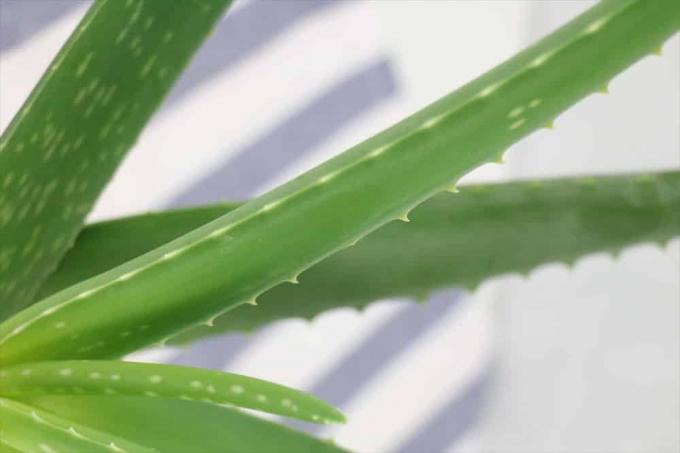
- Origin: South Africa, Arabia
- Leaves: Fleshy and lance-like, with pink serrated margins
- Growth: As a rosette of leaves, circular in all directions.
- Location: Robust plant, tolerates drought and frost.
- Care: Needs little water. Do not pour on the rosette! Water little in winter. Fertilize with cactus fertilizer.
- Note: Robust plant, even in drought and light frost.
- Tip: Well suited for bright, warm rooms.
azaleas

- Origin: Mountain forests of East Asia
- Blossoms. From white to violet, with double and single flowers.
- Growth: miniature plant or flowering standard.
- Location: Bright, no direct sun. Airy but not drafty. Partial shade in summer. Cool from September at 10 to 15 degrees.
- Care: Bales must never dry out. Irrigation water should be adapted to the air temperature.
- A notice. Spray a lot.
- Tip: a weekly immersion bath is ideal.
bamboo
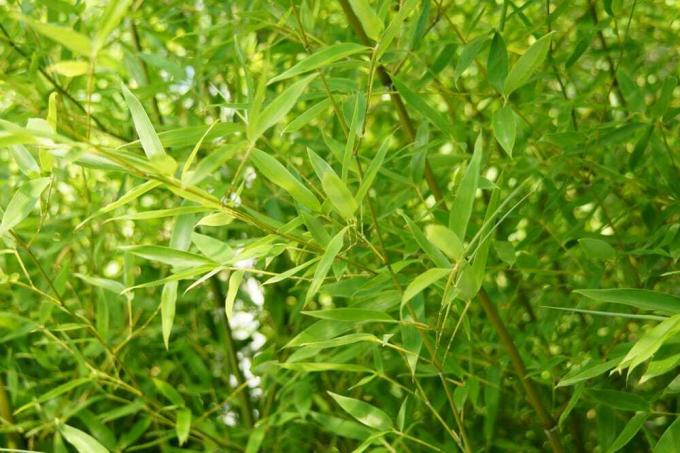
- Origin: Grasslands of China
- Leaves: Evergreen. Short, narrow leaves on thin, strong stems.
- Growth: Low, up to 60 cm high depending on the variety. Culms are dense, initially upright, later overhanging.
- Location: sunny to bright all year round. Can stand cooler in winter. Up to 16 degrees.
- Care: Water abundantly all year round. Fertilize every 2 weeks in summer and every 6 weeks in winter.
- Note: may be offered to cats instead of cat grass.
- Tip: Perfect for an Asian style of living.
bromeliad

- Origin. tropics South America
- Flowers: Cone-shaped with reddish bracts.
- Growth: sprawling rosettes of leaves.
- Location: As bright as possible, no blazing sun, warm all year round.
- Care: Keep well moist with low-lime water in summer. Fertilize a little weekly. Limit watering and fertilizing in winter.
- Tip: To help the flowering, you can cover the bromeliad with ripe apples in a plastic wrap for two weeks.
"Calla" - Zatedeschia
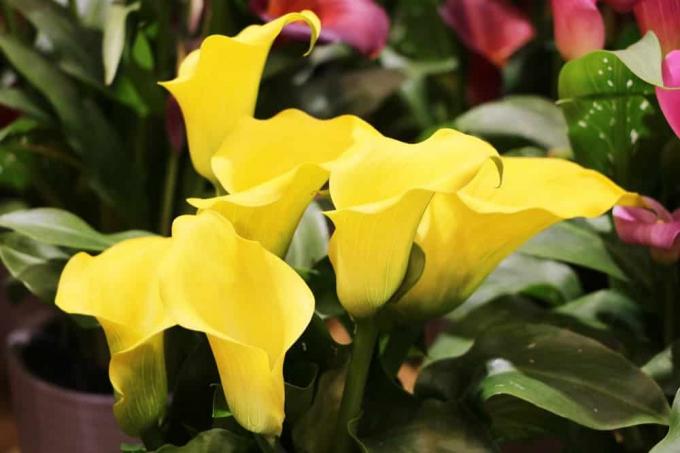
- Origin: South Africa
- Flowers: Yellow, calyx-like spadix.
- Growth: intensively colored flowers sprout like small trumpets out of the sparsely branched green.
- Location: Sunny to semi-shady. After flowering in May bright, cool place.
- Care: Plenty of water and weekly fertilizing with liquid fertilizer from December. In the dormant period from May, quite little water supply without fertilizer.
- Note: Place in a warm spot with plenty of light in winter to encourage flowering.
chili
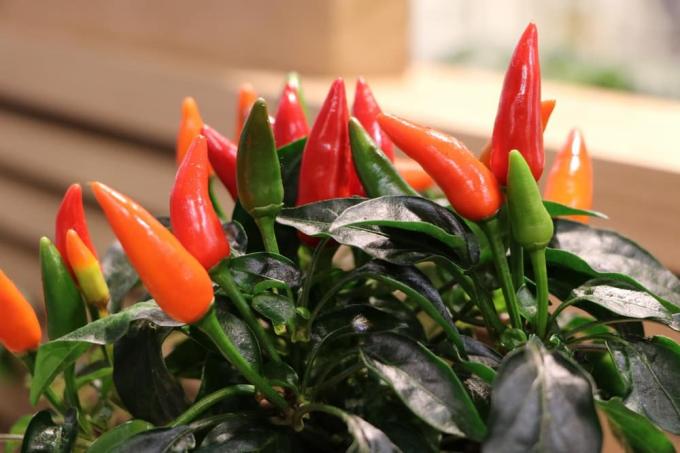
- Origin: tropics of South America
- Flowers: white flowers from June to September. Later bright red pods.
- Habit: Perennial, small bush or woody perennial.
- Location: Sunny.
- Care: Water regularly. Avoid waterlogging. Fertilize moderately.
- Note: Hottest variety: orange habanero. It has three times the amount of hot capsaicin compared to the other varieties.
- Tip: good to use as a spice, for example to spice up sauces.
fern
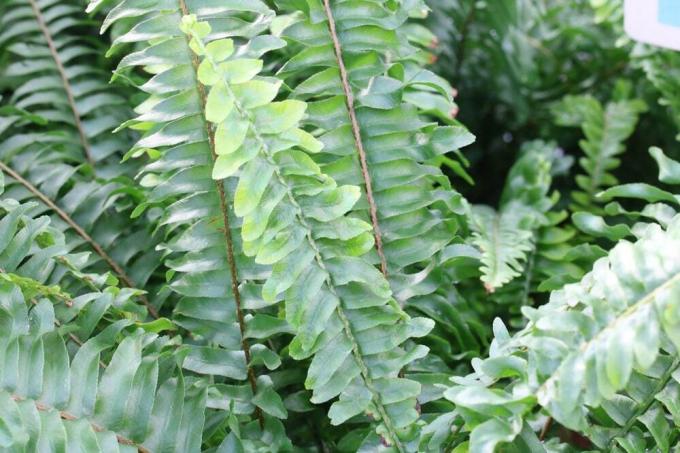
- Origin: tropical rainforests
- Leaves: In the case of the sword fern, long, sword-shaped fronds with crescent-shaped leaflets.
- Growth: Broadly sprawling or dainty, depending on the variety.
- Location: Light to semi-shady all year round. Even in winter not below 18 degrees. High humidity.
- Care Keep evenly slightly moist. Fertilize once a week in summer.
- Note: belong to the oldest plants in the history of the earth.
- Tip: Only water in tempered water.
Ficus Benjamina
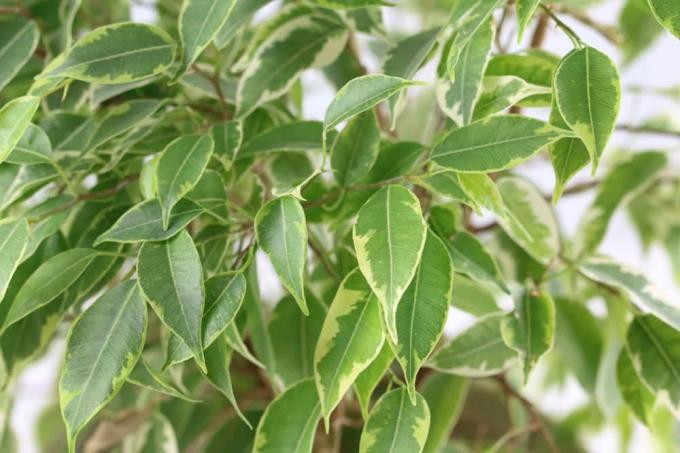
- Origin: tropics
- Leaves: Evergreen, mostly dark green and shiny.
- Growth: tree-like or as a climbing species.
- Location: Light all year round, no full sun.
- Warm in summer, cooler in winter, not below 16 degrees.
- Care: Water moderately in summer, in winter in a cool stand dryer. Spray more often. Fertilize moderately every 2 weeks in summer and every 4 weeks in winter.
- Note: increased leaf fall in drafts and temperature fluctuations.
- Tip: ideal for damp rooms, such as the bathroom.
rubber tree
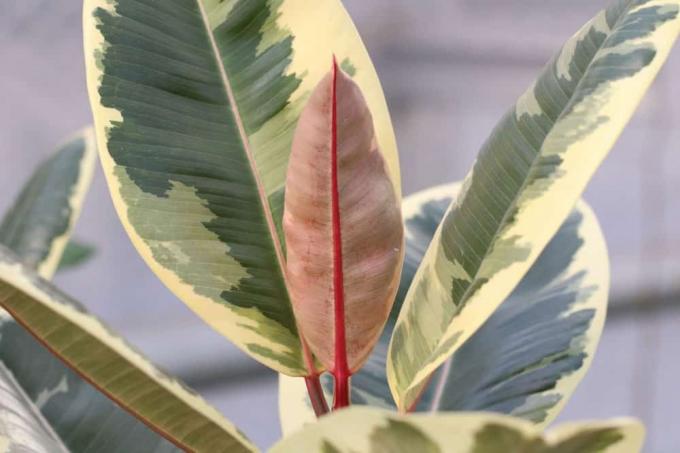
- Origin: Southeast Asia
- Leaves: Large, strong.
- Growth: The leaves sprout on the up to 3 m high, thin trunk.
- Location: Thrives well on west, east and even north windows.
- Care: Water evenly with lime-free water. Too much water is just as harmful as too little water. Fertilize every two weeks. Water less in winter, do not fertilize.
- Note: Dust the leaves regularly so that the plant can breathe freely.
- Tip: Frequent changes of location lead to leaf fall.
Potted plants from H to Z
hydrangea
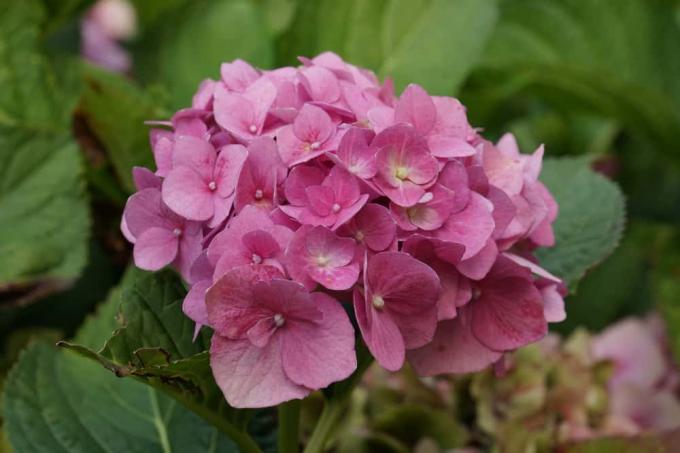
- Origin: mountain forests of Japan
- Flowers: Depending on the variety, hemispherical, ball-shaped or plate-shaped in pink, red, white or blue
- Growth: deciduous shrub. Bushy and upright growing.
- Location: Bright, without direct sun. Cool (around 16 degrees), well ventilated. Shady in summer.
- Care: keep well moist with lime-free water. Pour into the saucer too. Supply with rhododendron fertilizer.
- Tip: Blue-flowering variety turns pink if the substrate is not sufficiently acidic.
cacti
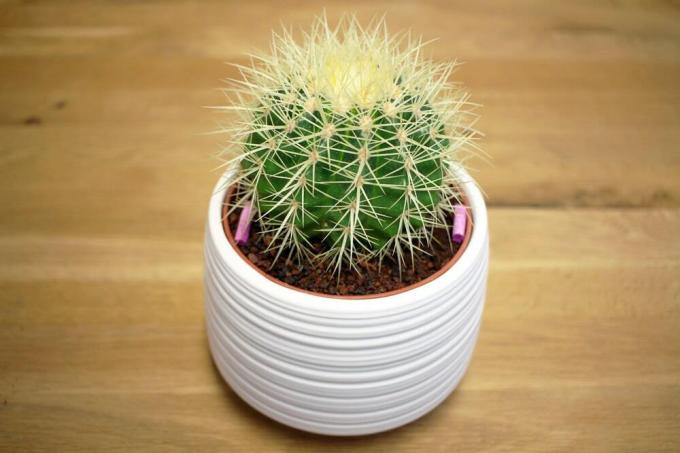
- Origin: dry areas of the world
- Leaves: Depending on the variety, flat, broad or spherical ribs.
- Growth: Balls or ribs often forming colonies, densely spined or hairy.
- Position: In full sun, protect green species with few spines from the blazing midday sun.
- Care: water sparingly with lime-free water in summer. Fertilize every four weeks with cactus fertilizer.
- Note: wreath or wart cacti sometimes develop enchanting flowers overnight.
tuberous begonia
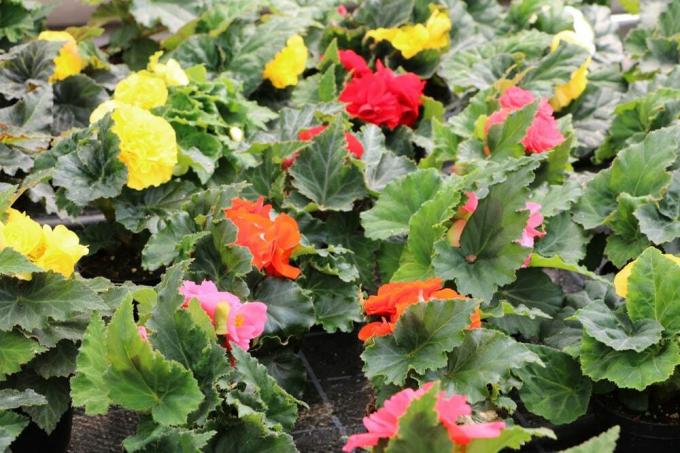
- Origin: South America
- Flowers: From white to pink and orange to shades of red.
- Growth: bushy, upright or hanging.
- Location: partial shade. In summer also outdoors, sheltered from the wind. Store the tuber in the peat bed in the basement for the winter.
- Care. Water regularly with lime-free water. Fertilize once a week. After the flowers have faded in September, the watering is reduced until the leaves wither. Start watering in spring.
linden tree
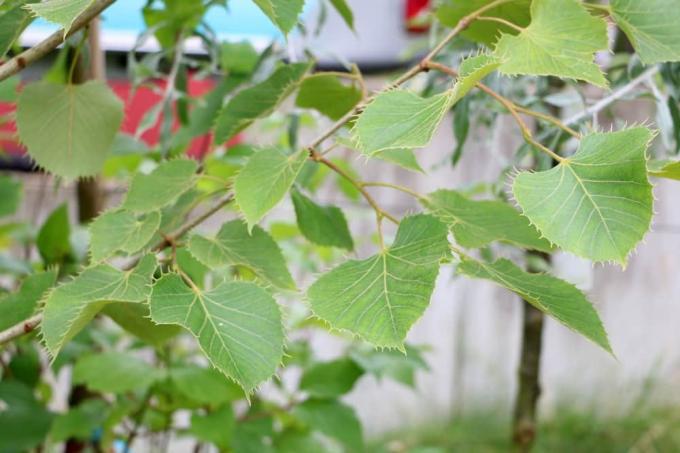
- Origin: light woods Africa
- Leaves. Room lime: large, rounded to heart-shaped, hairy leaves.
- Growth: Evergreen, as a shrub or tree. With good care, white flowers appear with yellow stamens.
- Location: Light and airy all year round. Fertilize every 1-2 weeks in summer and every 3-4 weeks in winter. Spray more often.
- Tip: Can be cut back.
orange tree
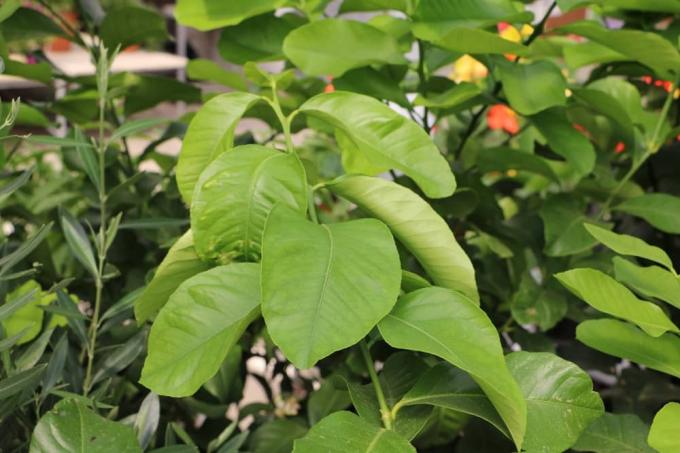
- Origin: Mexico
- Flowers: Seductively orange-scented white flowers with yellow inflorescences.
- Habit: bush-like shrub with lush green leaves.
- Location: sunny and airy. In the sunny months the temperature should be around 20 degrees, in winter around 5 degrees.
- Care: Water regularly and plentifully. Fertilize once a week in summer, do without in winter.
- Note: February is the best time to repot.
orchid
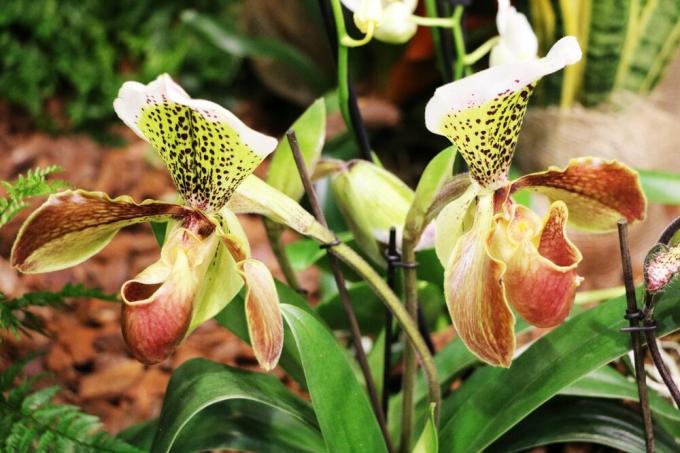
- Origin: Southeast Asia
- Flowers: Medium-sized, delicate inflorescences on a tall stem with leathery leaves.
- Growth: In nature, the plant grows epiphytically, i.e. perched on trees. Their numerous aerial roots indicate this.
- Location: Light to semi-shady. No direct sun. Ideal: 20 to 25 degrees. White and pink flowering varieties tolerate cooler temperatures.
- Care: Keep evenly moist. Water more sparingly in winter, but spray. Use orchid fertilizer.
Palm tree

- Origin: tropics and subtropics
- Leaves: Comb-like, pinnate, long fronds, slightly overhanging.
- Growth: Fronds are attached to thin stems, which are always grouped together.
- Location: bright, warm all year round, not below 16 degrees even in winter, young plants not below 20 degrees.
- Care: Always keep moist in summer, water a little in winter when it is cooler. Fertilize every 3-4 weeks in summer and every 6 weeks in winter.
- Tip: trunk remains as thick as when purchased.
passion flower
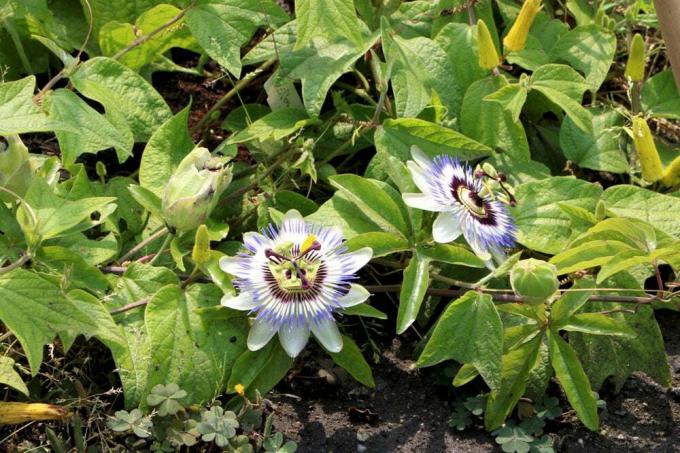
- Origin: South Africa
- Flowers: Up to 10 cm large flower plates made of white sepals and petals with a halo.
- Growth: Perennial climbing plant. Grows up to 2 m high.
- Location: Very bright, but not blazing midday sun. Bright at 6 degrees over winter.
- Care: Water plentifully in summer, fertilize weekly until August. Guide the shoots up loosely on sticks or rings in the pot or on a trellis.
- Tip: Cutting back encourages new blooms.
roses
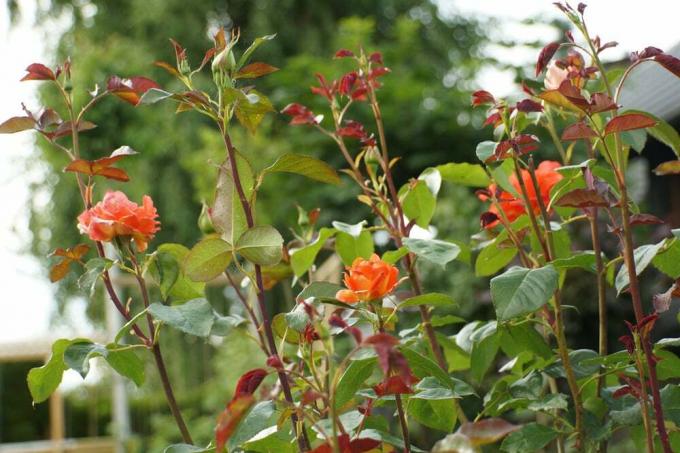
- Origin: Europe
- Flowers: in the kissing rose, red flowers. Other species in all colors except blue.
- Habit: Bushy, deciduous dwarf shrub.
- Location: Sunny and airy. Nice on the balcony and terrace in summer. Bright around 5 degrees over winter. Place warmer from February to sprout.
- Care: Water regularly during the growth phase. Drier over winter. Fertilize every 14 days until the end of July.
- Tip: remove faded leaves. This strengthens the plant.
citrus tree
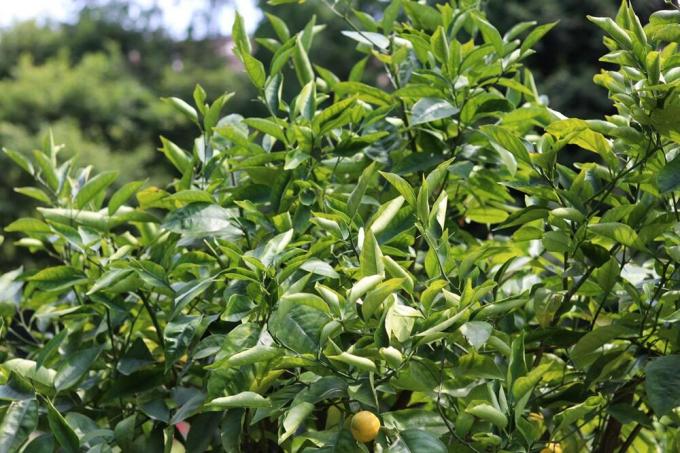
- Origin: Mediterranean
- Leaves: Long-lived, with dainty white flowers from which the fruit ripens.
- Growth: Branchy shrub or small tree.
- Location: Light and sunny all year round, warm but airy. Hibernation at 15 degrees.
- Care: Water abundantly with low-calcium water in summer, water sparingly in winter. Fertilize every ten days from February to August.
- A notice. If the plant is too warm in winter, it reacts with heavy leaf fall.
 garden editorial
garden editorial I write about everything that interests me in my garden.
Learn more about indoor plant dictionary

Ornamental asparagus, Asparagus densiflorus: Care from A - Z
Ornamental asparagus is a popular decoration for the garden or balcony. The following guide with tips for care from A to Z shows how Asparagus densiflorus and other species of the plant such as Asparagus plumosus or Asparagus sprengeri can be cultivated.

Easy-care office plants - 18 plants for the office
If you have the opportunity to make your office a little more personal, you often use office plants because they have several good properties. You can find out which indoor plants are suitable here.

20 plants for children's rooms: non-toxic and easy to care for
Decorative plants are part of the design of the children's room. Plants in their own room give the offspring a comprehensive insight into the care of the plants, even if they are easy to care for. It is important when choosing plants that you choose non-toxic species.

Pruning & branching Money Tree, Crassula ovata
The money tree proves to be well tolerated by pruning. With targeted cuts, it can be raised to become a standard tree or formed into a bonsai. There are no limits for your creativity. The plant tolerates rejuvenation cuts as well as educational cuts or the radical removal of all shoots.
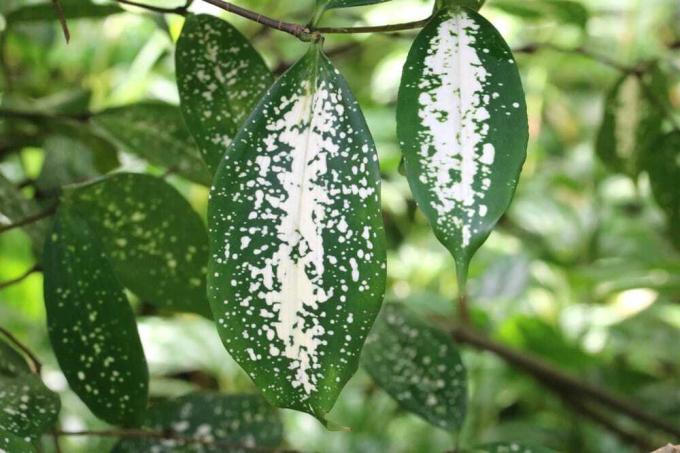
Dragon Tree, Dracaena surculosa: Care A – Z
Dracaena surculosa is a species of dragon tree popular for its fresh green and brightly mottled leaves. In contrast to the typical dragon tree, this one is more reminiscent of a bamboo because of its thin, branched stalks. But that is exactly what makes it so decorative.

10 useful indoor plants for a healthy indoor climate
Indoor plants transform a room into an oasis of well-being. They are decorative and healthy at the same time. They help to improve the room climate by reducing the concentration of carbon dioxide, optimizing the air humidity and binding pollutants from furniture and carpets. Which houseplants are recommended?
